Saikyo-ji Temple | A pleasant cool breeze blew through. A magnificent precinct surrounded by a tranquil atmosphere.
西教寺 | 心地よい涼風が吹き抜けた。静謐な空気に包まれた幽玄な境内
A beautiful view of Lake Biwa spreads out below. I strolled through the spacious and spectacular grounds.
Saikyo-ji Temple, the head temple of the Tendai Shinsei sect. It is said that Prince Shotoku built this temple for his mentor, the Goryeo monks Huiji and Huesong. After that, it fell into disrepair for a long time, but Jikei Daishi Ryogen Shonin restored it and turned it into a training hall for nenbutsu. After further time, in 1486, Mamori Shonin entered the temple. It led to the restoration of temples and teachings.
眼下に琵琶湖の佳景が広がる。ゆったりとした空気漂う、壮観な境内を散策する。
天台真盛宗総本山 西教寺。聖徳太子が恩師である高麗の僧慧慈、慧聡のために創建されたと伝わる。その後久しく荒廃していたが、慈恵大師良源上人が復興、念仏の道場とした。さらなる時を経て、文明18年(1486)に真盛上人が入寺。堂塔と教法を再興するに至る。
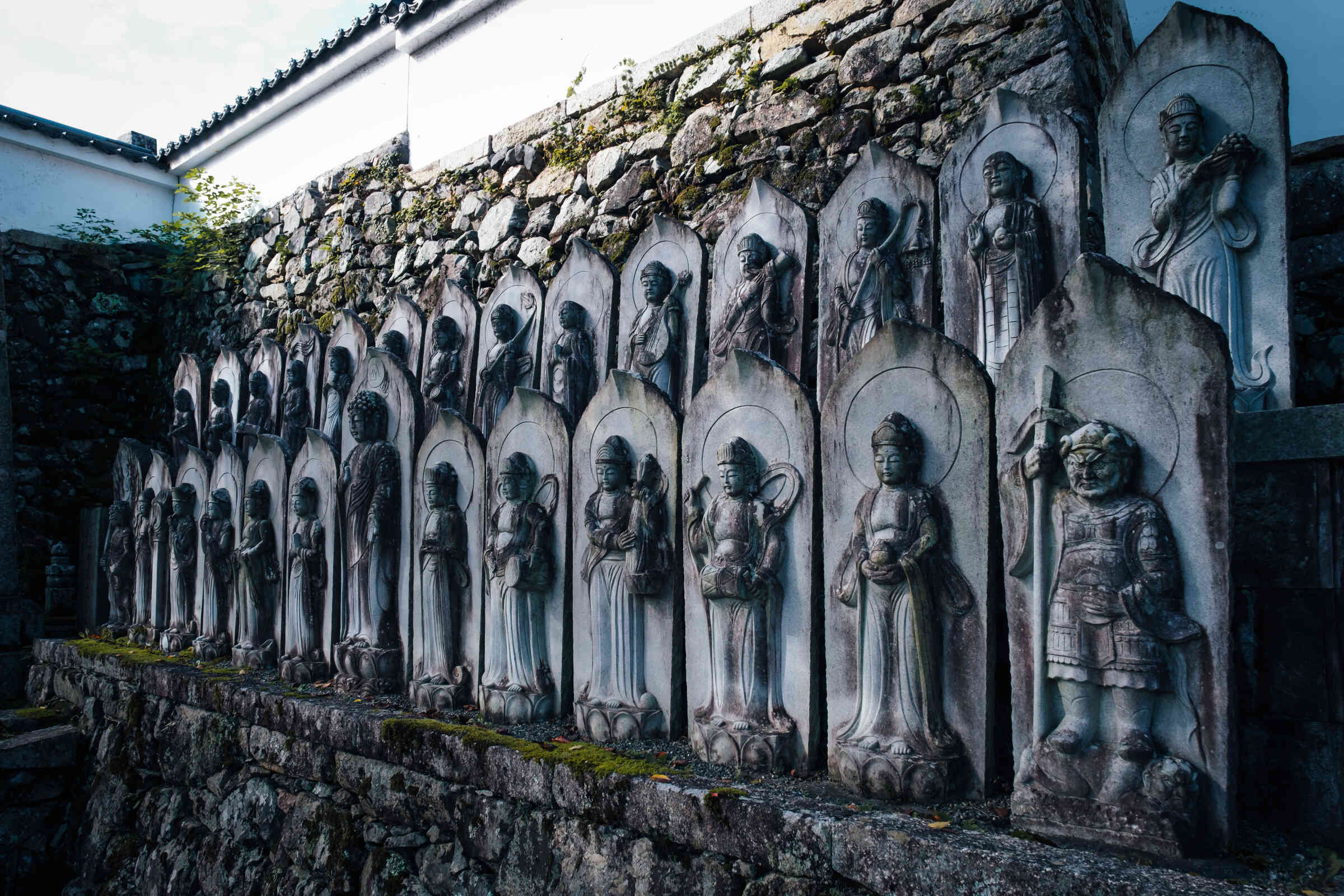
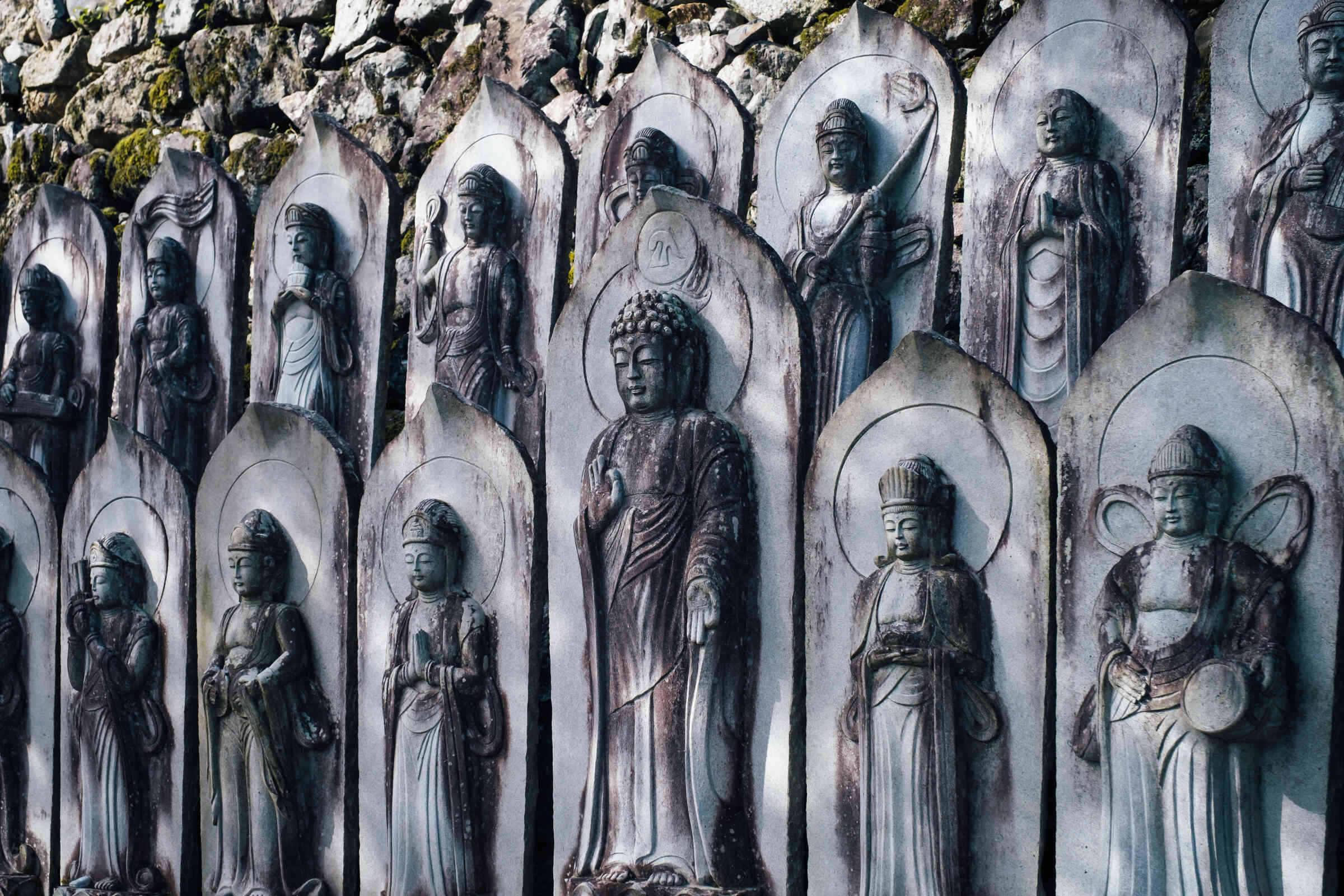
An era of gekokujo where the Onin and Bunmei War continue. The founder of the sect, Mamori Shonin, advocated strict observance of the precepts and practice of Shomyo Nembutsu. Since then, Saikyo-ji Temple has become a dojo for Buddhist precepts and nenbutsu, and has become the head temple with more than 400 branch temples nationwide. To this day, the nembutsu has been chanted continuously for a single day.
応仁・文明の乱が続く下克上の時代。宗祖真盛上人は戒律の厳守と称名念仏の励行を唱えた。以来、西教寺は戒律・念仏の道場となり、全国に約四百余りの末寺を有する総本山となる。現在に至るまで1日も絶えることなく念仏が唱え続けられている。


The main hall is a splendid total zelkova gabled structure. In the Edo period 1739, the building was completed. The materials were donated by the Kishu Tokugawa family, and the transom (16 Rakan) and Shumidan in the front are all made of zelkova wood, and are decorated with gorgeous decorations that represent the characteristics of the early Edo period.
見事な総欅入母屋造の本堂。江戸時代 元文4年(1739)に上棟落成。用材は紀州徳川家からの寄進、正面の欄間(十六羅漢)や須弥壇はすべて欅の素木造で江戸初期の特色を表す豪華な装飾が施されている。
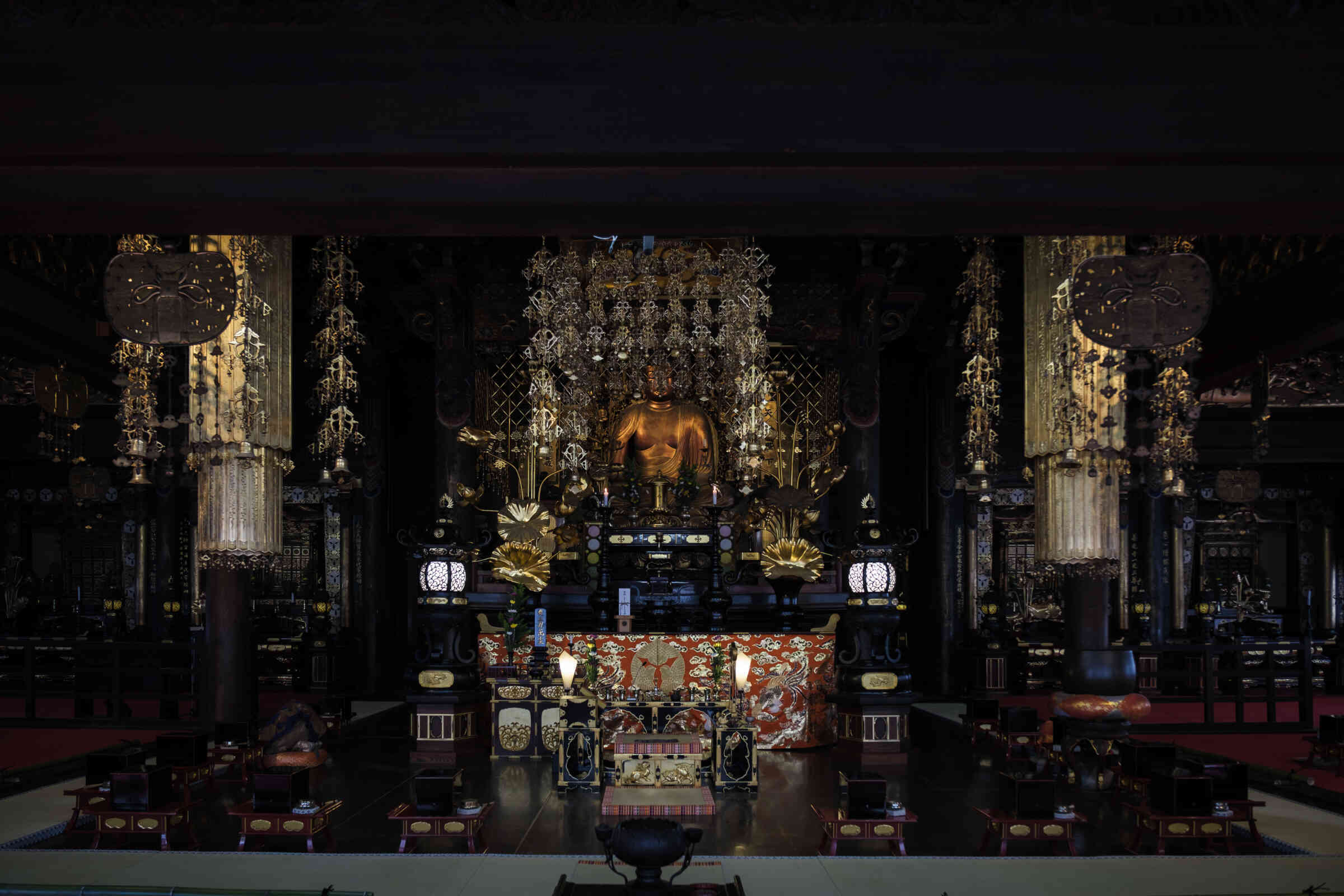
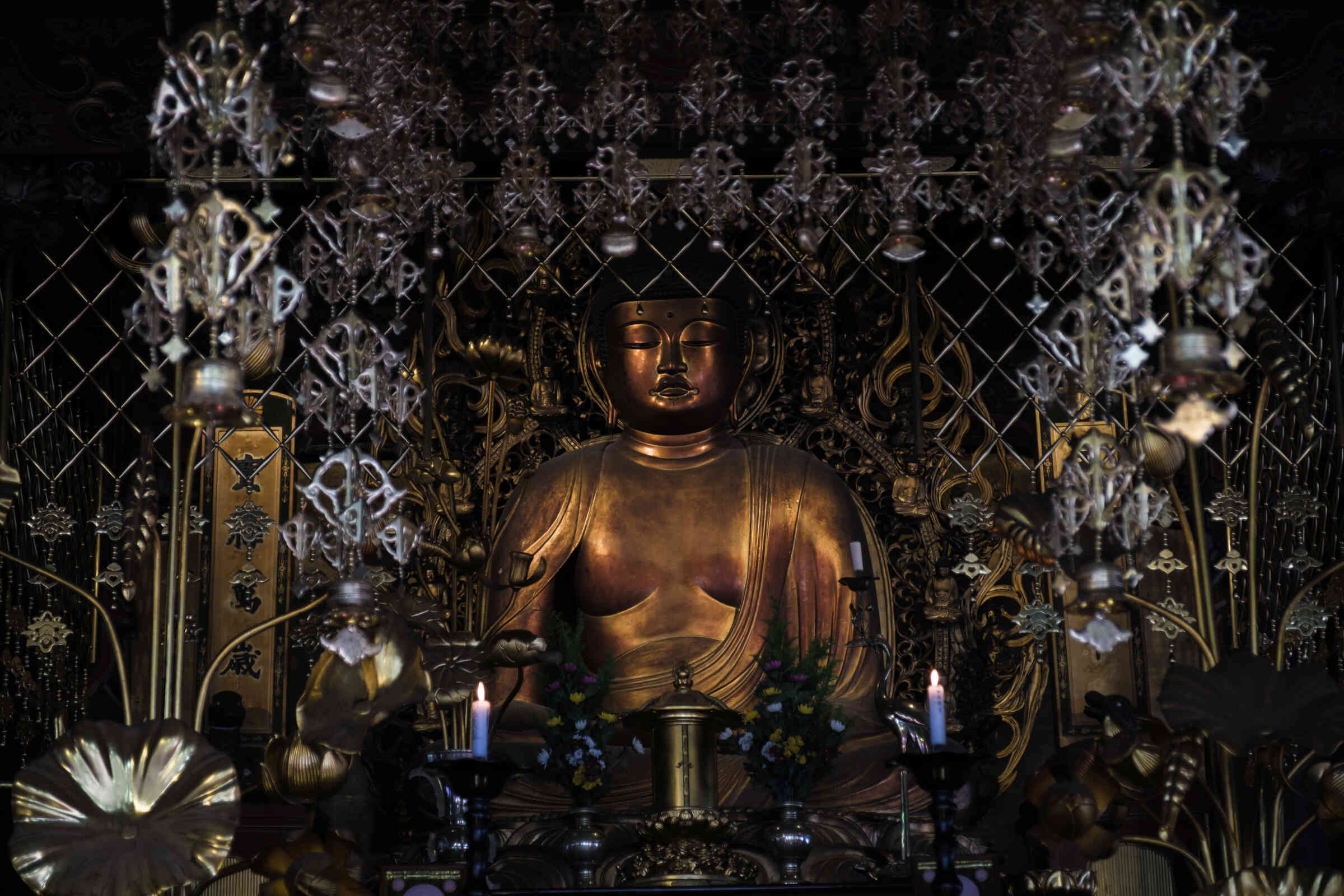
The main hall filled with a solemn atmosphere where the nembutsu resounds. The mail idol enshrined here is Joroku Amida Nyorai (Heian period, Jocho style), an important cultural property.
念仏が響き渡る、厳かな空気に満ちた本堂。ご本尊は、重要文化財の丈六の阿弥陀如来(平安時代・定朝様式)が安置されている。

Mamori Shonin "Sacrifice white monkey"
In 1493, during the Muromachi period, when the Tokusei Ikki broke out in Sakamoto, monk warriors from the temple attacked Saikyo-ji Temple, mistaking the ringleader for Shinmori Shonin. However, there was no one in the precincts, and only the sound of the gong could be heard from the main hall. Hearing this, the soldier monks rushed into the main hall, where they found a monkey with a white hand beating the gong in place of the priest. It is said that even the monkey, a messenger of Hiyoshi Sanno, was enchanted by the monk's indoctrination and chanting the nembutsu, and left the place.
真盛上人「身代わりの手白猿」
室町時代の明応2年(1493)坂本で徳政一揆が起こった際、その首謀者が真盛上人と誤解した山門の僧兵が西教寺に攻め入った。しかし境内には人影がなく、ただ鉦の音だけが本堂から聞こえてきた。それを聞いた僧兵が本堂に駆け込むと、そこには一匹の手白の猿が上人の身代わりとなって鉦をたたいていた。日吉山王の使者である猿までが上人の不断念仏の教化を受けて念仏を唱えていることに感じ入った僧兵はその場を立ち去ったのだとか。

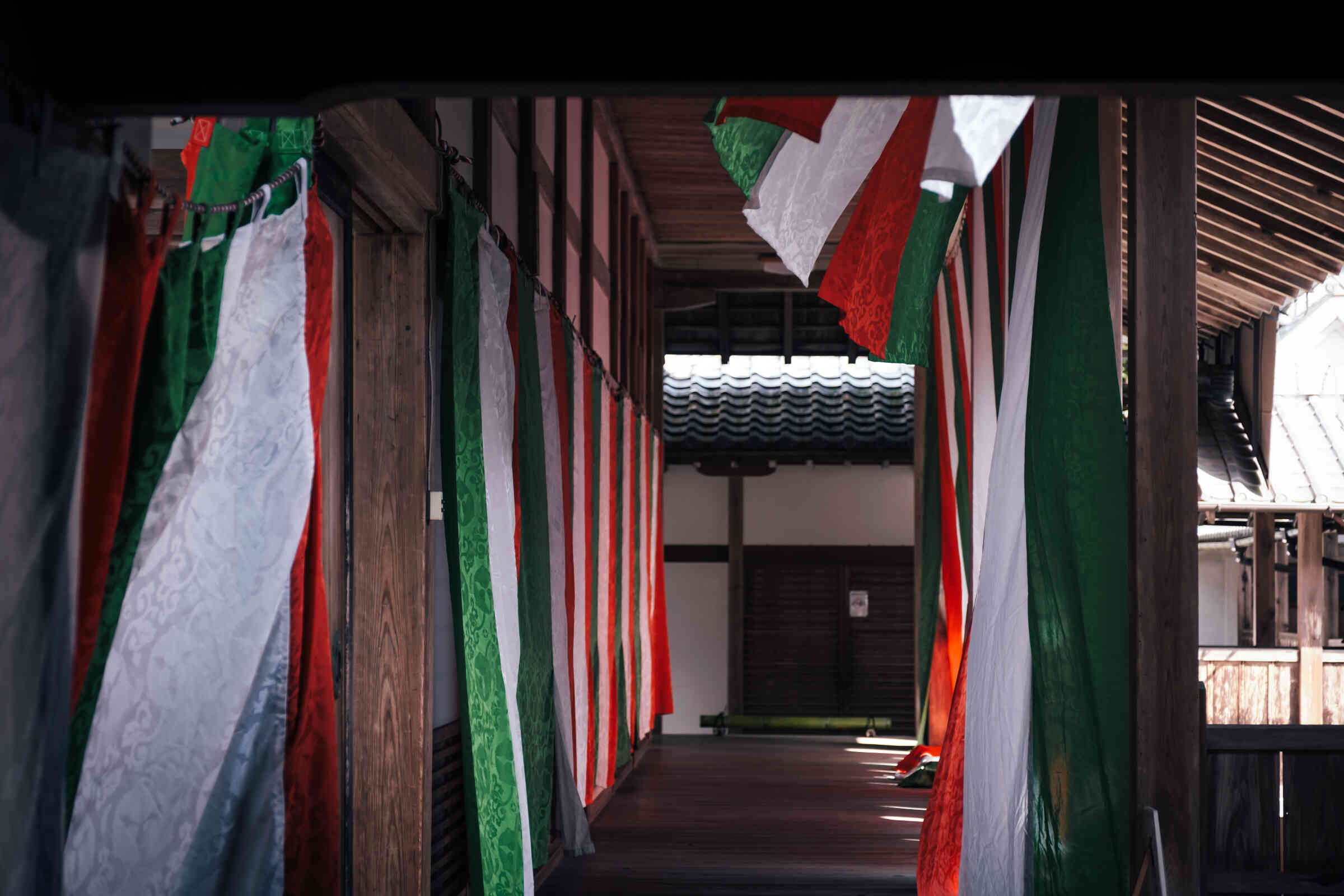
The reception hall that continues from the main hall. Originally the former hall of Toyotomi Hideyoshi's Fushimi Castle, it was donated in 1598 by the wife of Nagatoshimori Yamanaka, the mother of Otani Gyobu Yoshitaka. The fusuma paintings of the Kano School are drawn in each of the rooms arranged in two rows, and the inner Buddha of the sage's room is a seated statue of Yakushi Nyorai, a secret Buddha that has been handed down from Hossho-ji Temple in Kyoto.
本堂から続く客殿。もとは豊臣秀吉の伏見城にあった旧殿で、慶長3年(1598)に大谷刑部吉隆の母・山中長俊守内室が寄進したもの。二列に配置された室にはそれぞれ狩野派の襖絵が描かれ、賢人の間の内仏は京都法勝寺伝来の秘仏薬師如来座像。

The view from the reception hall is an elegant garden created by Enshu Kobori. An ornamental garden that skillfully utilizes the steep slopes of the back mountain and makes full use of round cuts and small cuts. The pond in the center is a gourd-shaped pond that incorporates the shape of a biwa, and is composed of two rocks with a small hill built between the lower part of the mountain and the pond. The fresh greenery of early summer, the blooming of the azaleas, the autumn foliage at the height of autumn, and the snowy landscape of winter are said to be particularly spectacular.
客殿からの眺めは、小堀遠州作の風雅な庭園。裏山の急傾斜の山畔部を巧みに利用し、丸刈角刈の小刈込を駆使した観賞庭園。中央の池泉は琵琶の姿を取り入れた瓢型で、山畔の下部と池泉との間に小丘坡を築いた二つの石組で構成されている。初夏の新緑、さつきの咲く頃、秋たけなわの紅葉、冬の雪景色等は特に素晴らしい眺めとなるという。
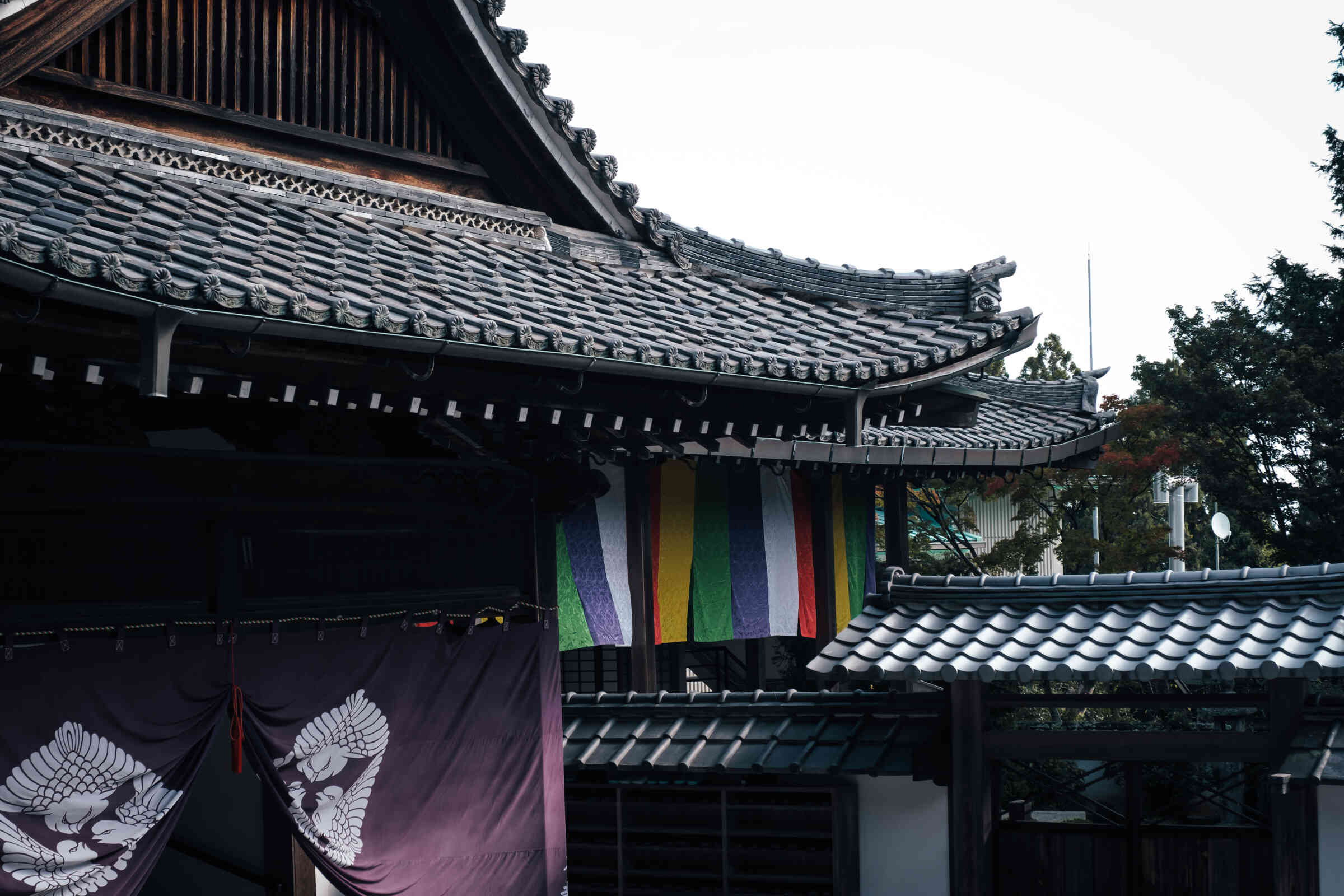

During the Warring States period, when Nobunaga Oda set fire to Mt. Immediately after that, Akechi Mitsuhide became the lord of Sakamoto Castle. Since Mitsuhide became a follower of Saikyoji Temple and worked hard to restore the temple, the grave of the Mitsuhide family remains in the precincts.
戦国時代、織田信長の比叡山焼き討ちの際には、ここ西教寺も災禍に見舞われた。その直後に坂本城の城主となったのが明智光秀。光秀は西教寺の檀徒となり復興に尽力したことから、境内には、光秀一族の墓も残る。
about this venue
Location: 5-13-1 Sakamoto, Otsu City, Shiga Prefecture
Phone: 077-578-0013
電話番号:077-578-0013
〈重文〉本堂 客殿 木造阿弥陀如来坐像 木造聖観音立像 木造薬師如来坐像 絹本著色当麻蔓茶羅図 絹本著色阿弥陀如来像(2幅) 絹本著色釈迦如来像 絹本著色天台大師像 絹本著色山王諸神像 紙本著色扇面古写経 絹本著色豊臣秀吉像 後土御門天皇宸翰真盛上人号紙本墨書無量義経疏(3巻) 注大般涅槃経巻第八 色紙金銀箔散法華経(8帖) 石灯籠 鰐口 梵鐘
